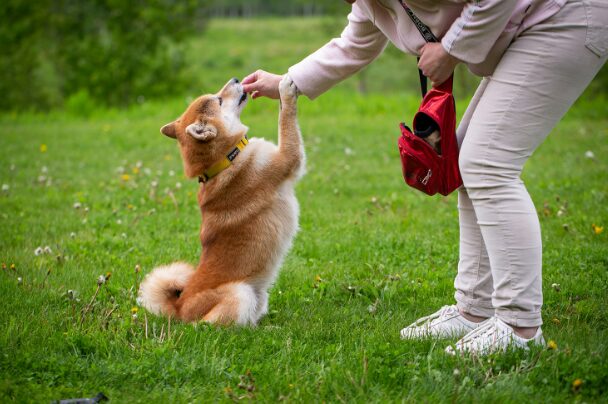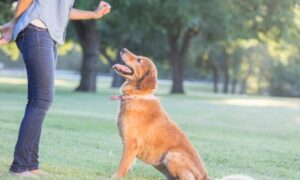Working as a professional dog trainer has revealed a simple truth: no two breeds are quite the same. The approach, timing and communication needed to train each dog depend as much on a breed’s disposition as on its upbringing. People often think dogs learn in the same way, but success comes from understanding and adapting to their unique qualities.
Rottweiler Training: Navigating Intelligence and Power
Training rottweilers is a rewarding challenge, but their strength demands respect and skill. Early socialisation is crucial. Rottweilers thrive on clear direction and flourish under consistent rules and regulations. They pick up commands quickly, but can be stubborn. Their protective nature needs careful guidance to avoid developing over-guarding.
Keeping sessions active but structured suits their energy. Rottweilers value leadership but dislike harsh punishment. The most powerful tool is positive reinforcement with plenty of opportunities for mental stimulation.
Doberman Training: Sensitive Minds, Fast Learners
Dobermans are often misunderstood. They combine sharp intelligence with a sensitive streak. These dogs bond tightly to one or two people, and they respond beautifully to dog training that combines firmness with warmth. They dislike confusion and become nervous when faced with unpredictable handling.
Quick learners by nature, Dobermans need short, focused lessons. Excessive repetition turns them off. Give them creative problem-solving tasks and reward their initiative. They need exercise to burn off energy, but a Doberman’s mental health is crucial too.
Labrador Training: Enthusiastic and Eager to Please
Training a Labrador is usually a delight. They want nothing more than to make you happy. Their happy-go-lucky nature makes them quick learners, but also makes them easily distracted. Labradors respond best to praise and reward. A gentle touch works wonders.
Consistency is important; their friendly nature means they will test boundaries if you don’t set clear limits. Use simple, clear cues and never rush them. Labs often excel in obedience classes because routines come naturally to them. Socialisation is generally easy, but food motivation can work against them, so monitor treats carefully.
Bulldog Training: Calm, Stubborn, and Affectionate
Bulldogs have a reputation for being tricky to train. Their slow, easy-going character conceals a stubborn streak. They rarely rush and dislike strenuous activity, so short sessions are best. Bulldogs bond strongly with people, which helps with reinforcing positive behaviours. They need some coaxing.
Patience and encouragement are more effective than stern commands. Dog training for bulldogs requires rewarding persistence and not expecting quick mastery of every trick. They can be surprisingly clever with enough incentive, but avoid overexertion.
Retriever Training: Sociable and Versatile
Retrievers, including Golden Retrievers, combine intelligence, sociability, and an instinct to work with people. They learn new commands fast and have a natural drive to please. Golden retrievers love routine, so steady schedules work well for them.
They thrive in structured group classes and enjoy games involving fetching and retrieving. Their sociability makes them responsive to praise. Retrievers respond best to gentle reminders, rather than harsh corrections. When working with retrievers, mix up the routines to prevent boredom. They respond enthusiastically to both voice and gesture cues.
German Shepherd Training: Work Ethic and Loyalty
German Shepherds are among the most trainable dogs, but they require serious commitment. These dogs crave jobs and responsibility. Provide a clear structure from the outset, with daily routines and precise commands. Shepherds can learn advanced tasks, including scent work and agility, and they thrive on training challenges. Early and diverse socialisation is important.
German Shepherds are protective and can be wary of new people, so it’s essential to expose them to varied environments. Their work drive means they need frequent reminders to relax and play. Emphasise trust and avoid unpredictable corrections.
Kelpie Training: High Energy, High Focus
Australian Kelpies represent the working dog’s ideal. They have abundant energy and focus. Kelpies require stimulation to thrive, both physically and mentally. Dog training should be brisk and purposeful. These dogs respond well to advanced commands and sequences. They quickly understand new challenges but get bored if routines become stale.
Sharp focus allows Kelpies to excel in performance tasks. Their intelligence means they need more than basic obedience; teach tricks, scent games and varied commands. Kelpies prefer active dog trainers who engage and lead with confidence.
Heeler Training: Independent Thinkers and Problem Solvers
Heelers, or Australian Cattle Dogs, are bred for independence and problem-solving. They have a stubborn streak, but also remarkable loyalty once leadership is established. Dog training requires assertive guidance, but also respect for their intelligence.
Heelers want a reason for every command. Training decisions should be communicated clearly and backed by rewards. Practical exercises, such as herding games or obstacle courses, keep them focused and engaged. These dogs make good partners but can be too clever for their own good, testing boundaries if not consistently managed.
Chihuahua Training: Small Package, Big Personality
Size does not determine difficulty. Chihuahuas, despite their tiny stature, often run the household if allowed. Training should focus on consistent boundaries. They respond well to short, concentrated sessions, with frequent breaks.
Chihuahuas crave attention and enjoy being challenged, but dislike heavy-handed correction. Their size makes them vulnerable to anxiety, so positive reinforcement is best. Teaching confidence is as important as basic cues in this breed.
The Importance of Breed-Specific Dog Training
Every breed contains a spectrum of personalities, yet consistent patterns emerge. Understanding each breed’s heritage, typical temperament and energy levels helps the dog trainer map out a plan.
Dog training is not just about commands, but about communication. Going beyond a generic approach and tailoring the training style to the breed yields dependable responses, a happier dog, and a more harmonious household.
Environment & Upbringing
Genetics give a breed its blueprint, but upbringing shapes the individual. Early socialisation, exposure to different settings, and varied dog training exercises enhance every breed’s learning capability. Dogs living in busy homes need to learn how to disengage and relax, while working breeds require challenges to keep their minds sharp.
Adapt to Weather, Routine & Family Life
Practical routines serve every breed. Outdoor-loving dogs, such as retrievers and kelpies, thrive on morning exercise and games, while indoor breeds like chihuahuas prefer short walks and puzzle toys. Timing is another factor; challenging breeds may need sessions when energy peaks, while calmer breeds benefit from gentle practice in the evenings.
Reward Systems & Motivation
All dogs like rewards, but motivations differ. Labradors and retrievers are largely food-driven. German Shepherds respond best to praise and meaningful tasks. Kelpies and heelers crave activity, enjoying games as much as treats. Dobermans benefit from gentle attention, and chihuahuas adore playful interaction. Use the motivator that suits the breed’s temperament.
Socialisation: The Foundation of Lifelong Success
Rottweilers, Dobermans and German shepherds benefit from calm introductions to strangers, while retrievers and labradors often need more boundaries with new acquaintances. Chihuahuas must learn to feel safe around larger dogs, while bulldogs require playful but slow-paced introductions. Each breed faces unique social challenges; the best results are achieved through patience and controlled settings.
Common Pitfalls When Training Different Dog Breeds
Misreading a breed’s temperament is the biggest mistake dog trainers make. Stubborn breeds like bulldogs and heelers require steady leadership, not forceful correction. Sensitive breeds such as Dobermans and chihuahuas shut down under stress. Retrievers and labradors may become bored without stimulation. Kelpies thrive on structure but quickly lose interest with repetition. German shepherds can get anxious without routine and purpose.
Knowing the breed means knowing when to encourage, when to hold back and how to pivot your dog training for the best results.
Advanced Dog Training & Specialisation
Once basic obedience is established, many breeds push for more. German shepherds excel in protection and tracking, while kelpies specialise in herding tasks. Labradors and retrievers dominate in search and rescue or service dog work thanks to their drive and reliability. Heelers adapt well to agility and obstacle training. Even bulldogs and chihuahuas can succeed in trick training when sessions are focused and fun.
Ongoing Training Builds Lasting Bonds
Dog training is more than commands; it’s a continuing conversation. Every dog, regardless of breed, needs ongoing education through new tricks, activities and interactions. This builds trust, strengthens the owner-dog bond and provides mental engagement well beyond puppyhood.
The Right Dog Trainer Makes a Difference
Choosing a dog trainer experienced with your dog’s breed will help streamline the process. Look for someone who adapts the session structure and communicates clearly. The best dog trainers strike a balance between expertise and patience, ensuring each dog progresses at its own pace.
To Wrap It Up
Whether working with stubborn bulldogs, energetic kelpies or sensitive Dobermans, the experienced dog trainer sees not just a list of commands, but an opportunity to build confidence, trust and joy. The journey is as important as the destination, and the right approach ensures dogs and owners enjoy every step together.



































